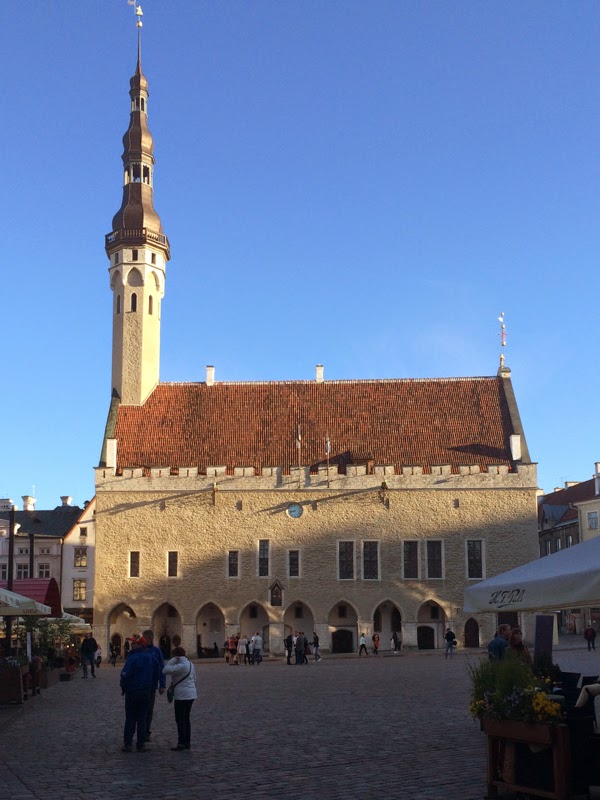In the ancient city of Tallinn, after a long day travelling.
(Just to take a break from all that Tyrone soul-searching, here is a little travelogue interlude. I can assure you that I will return to a “Life in Stone” before too long.)
I left our apartment this morning sometime after seven. It was a beautiful summer morning in Paris, bright sunshine, warm. Taking the train to the airport was challenging, thanks to the residual effects of a week-long SNCF strike. But I got there in the end and I got to my terminal and gate (after realising that no, I don’t have to queue as I had a boarding pass already printed). Bizzarely, the aeroplane was full of folk travelling to Japan and China. And then a phase change, state change, a change of country: I found myself in Helsinki. The miracle of modern transportation.
The first one sees as one approaches Helsinki airport are trees, trees. There are forests everywhere around, together with shining blue lakes and bays. Through the windows of the airport one can see the stands of trees beyond the tarmac. Low clouds hung in the sky, it looked like had rained recently. I took the bus to the train station through streets silvery with rain. The city seemed strangely empty … where is everyone? I found myself in front of the Helsinki train station, just in time to take a tram to the ferry terminal to catch my catamaran to Tallinn. I had seen this train station in Jim Jarmusch’s Night on earth many years ago and thought to myself I really would like to visit this city one day … On the bus to the port, I thought of a Finnish friend I had made in in that distant summer I first visited Europe, 1991. I promised to come and see him in Helsinki. I remember talking to my mother on the telephone about my proposed trip to Helsinki. But, she said to me, if you look at a map, won’t you have to go through Russia to get there? No, I assured her, I could simply take a ferry from Poland. Right? I got as far as Prague before I turned back. Too far.
The crossing was extremely rough. We were warned about the bad weather and cautioned not to leave our seats. The catamaran pitched and rolled violently. Strange, because the sun shined brightly and there were no clouds in the sky. There must have been strong offshore winds. Then, after one and a half hours, of zipping over the waves, Tallinn. I caught a taxi to the hotel, the palatial “Nordic Forum” and here I am, after having walked around the city for an an hour or two and eaten in a nice Indian restaurant (I’m not quite ready for Estonian cuisine). It is half-past midnight and there is still sunlight in the sky.
There is a strange feeling to this city. To start with there is a sharp edge in the air. I am glad to have my cap. The temperature can’t be more than 10 or 11 degrees, but it is not so cold, at least not yet, because there is abundant sunshine. The streets seem are almost empty. Like in Helsinki, it feels as if there is no-one here. This is an after-effect of living in an overcrowded city like Paris? The old town of Tallinn is remarkable: it seems unchanged since hundreds of years (that photo up there is the Tallinn town hall). The streets are filled with tall narrow old hanseatic buildings. The city’s buildings have been wonderfully restored but if one looks carefully edges of the old unrestored past are visible…
Perhaps everyone has left for the midsummer’s night vacation, Monday and Tuesday of next week. I’ll report back.
(On the aeroplane I began to read “The Czar’s Madman’, from the Estonian Jan Kross. A suggestion from Mr. Seagull. It is set in Estonia in the 19th century. It is indeed interesting to read it here.)

